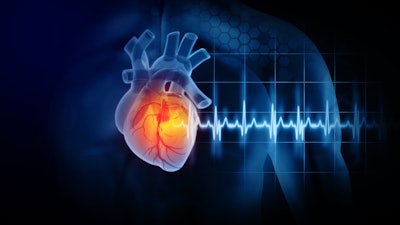
Abbott announced it has received CE Mark in Europe for the AVEIR dual chamber (DR) leadless pacemaker system, what it's calling the world's first dual chamber leadless pacemaker that treats people with abnormal or slow heart rhythms.
AVEIR DR enables the world's first beat-to-beat, wireless communication between two leadless pacemakers, designed to address the needs of people living with abnormal heart rhythms and expand treatment options in Europe.
The AVEIR DR leadless pacemaker system utilizes a new method of delivering dual chamber therapy as it is comprised of two unique devices – one that paces the right ventricle (AVEIR VR) and one that paces the right atrium (AVEIR AR). Each device is roughly one-tenth the size of a traditional pacemaker and smaller than a AAA battery.
A traditional pacemaker is a small battery-powered device implanted underneath the skin in the chest through a surgical procedure. The device delivers electrical therapy to the heart via thin insulated wires better known as cardiac leads, and often leaves a chest scar and device bulge that is visible. Unlike traditional pacemakers, leadless devices are implanted directly into the heart through a minimally invasive procedure, eliminating cardiac leads. As a result, leadless pacemakers reduce people's exposure to potential lead and infection-related complications and offer a less restrictive and shorter recovery period post-implantation.
Through Abbott's proprietary i2i (implant-to-implant) communication technology, AVEIR DR provides synchronized pacing between two leadless pacemakers on every heartbeat based on a person's clinical needs. The i2i technology utilizes high-frequency pulses to relay messages via the naturally conductive characteristics of the body's blood between the paired, co-implanted devices. Conductive communication uses far less battery current than inductive, radio-frequency, or Bluetooth® communication, which are alternatives often used in implantable medical devices or traditional pacemakers.
The AVEIR DR i2i Global Clinical Investigation study showed that AVEIR DR met its three prespecified primary endpoints for safety and efficacy. Results through three-months post-implant showed a 98.3% system implant success rate and more than 97% of people had a successful atrio-ventricular synchrony, so that the upper and lower chambers were beating normally, despite different postures and gaits.






















